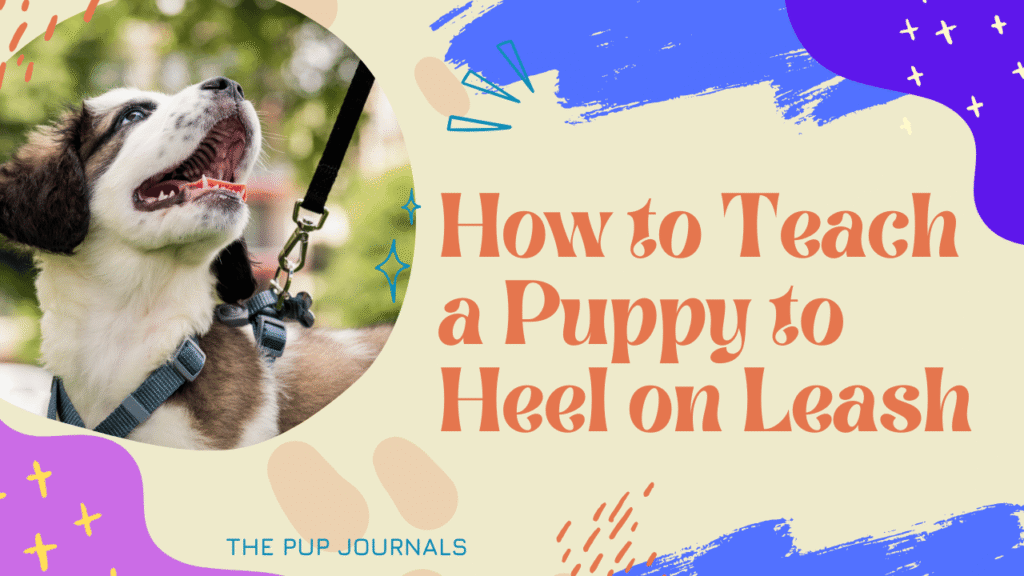
Table of contents
Training your puppy can be one of the most rewarding parts of pet ownership. One common question many pet parents ask is: how to teach a puppy to heel on leash? In this guide, we will go you through simple, clear steps to help your puppy learn to walk loyally at your side.
Why Heel Training Matters
Heel training is an important part of teaching your puppy to walk calmly at your side. When your puppy walks at your side, it is safe and not distracted or focused on other things. Heel training allows both of you to enjoy the walk together. A well-trained puppy that heel correctly makes social outings easier. Using the right training methods allows your puppy to become accustomed to following your lead during walks. Well established heel training strengthens the bond you have with your puppy. The first step in better walks is learning how to train a puppy to heel on leash. With proper training, your puppy will walk nicely even in busy areas reducing its propensity to pull and taking the stress out of walking your dog.
Gather the Right Tools
Before you start, you need the right equipment. Here’s what you will need:
- A Properly Fitted Harness or Collar: A harness is preferred for young puppies because it gives them more comfort and control.
- A Standard Leash: A six-foot leash works well.
- High-Value Treats: Choose small, tasty treats your puppy loves.
- A Clicker (Optional): Clicker training can help mark good behavior.
- Patience and Time: Training takes patience and consistency.
Having your tools ready makes the process of learning how to teach a puppy to heel on leash smoother and more effective.
Step 1: Start in a Distraction-Free Area
Start training your puppy in a quiet and familiar area like your living room or back yard. Keeping distractions to a minimum will help your puppy focus on listening to you. Sit on the floor with your puppy close to you. Give your puppy a few minutes to get used to being around you and the sound of your voice. Try to maintain a calm and friendly demeanor. It will be easier for you to demonstrate walking on a leash at your side in this more serene environment.
This calm environment is so important for learning how to teach a puppy to heel on leash. It sets you up for success when you learn to add distractions gradually.
Step 2: Introduce the Heel Position
Next, help your puppy learn what the “heel” position is. Stand upright and hold a treat in your hand at your side, close to your leg. Move the treat slowly so the puppy follows it, and you want to keep the puppy’s head and shoulders in line with your side. The second the puppy reaches the heel position, say a command word (e.g., “Heel”) in a loud, happy voice, and give the treat. Go through this exercise a few times. Gradually, you will see the puppy wanting to maintain the position, and your verbal and body language cues will reinforce your expectations. The beginning of the process of learning how to teach your puppy to heel on leash involves giving a visual and delectable reward for the correct position.
Step 3: Walk a Few Steps
Once your puppy is familiar with the heel position, you can put it on leash. Now, take just a few steps forward. Ideally carry the treat close to your body so your puppy will be enticed to stay with you. As you move continue to verbally say “heel” in a positive tone. Each time your puppy is adjacent to you, reward it right away with praise and a treat such as ‘good puppy !’. If your puppy gets out of position or is pulling ahead of you, gently but firmly guide it back with the leash. Do not jerk it hard, rather redirect it with a steady calm and slow handed movement. Many frequent praises and treats are the best reinforcers and motivates to shape future behavior. You are giving guidance slowly to teach your puppy to walk nicely beside you.
Step 4: Increase Your Distance Gradually
After some successful short sessions you can add distance to your walking sessions. Please move to an area where there are some more distractions than “THE BACK YARD’ or ”A QUIET PLACE”. Depending on your puppy, either the “quiet’ park or the neighborhood street with no traffic will also suffice. Keep your commands simple and don’t change them. Additionally, continue to reward with praise, and treats every time your puppy stays in the heel position.
Be patient with the learning process, your puppy “will” learn to cope and focus, notwithstanding the distractions, and by gradually increasing the challenge you are giving more opportunities for your puppy to learn how to heel on leash in a non-distraction environment. This stage ehances the confidence level of your puppy, and enhaces the training you have provided, now in more general situations.
Step 5: Use a Clicker or Marker Word (Optional)
Some pet parents have had great success using clicker training to reinforce behaviors. If you decide to use a clicker, make sure you click right when your puppy is in the heel position before giving them a treat. They will eventually associate the clicking sound or marker word with the behavior you want to encourage.
Using a clicker is not necessary, but can be really helpful when trying to teach a puppy to heel on leash. It is a clear snapshot of the exact time the dog earned a reward, making the training effective.
Step 6: Practice Consistently
When training a puppy, time and repetition are required. Short and repeated sessions are the optimal way to practice. You should practice multiple 5-to-10-minute sessions per day. Each session should be fun for your puppy. You want your puppy to figure out that your expectations are the same every time you take them for a walk.
If your puppy misbehaves or forgets the heel command, calmly return to a distraction free area, and start over. Ultimately, patience and consistency are the two important factors to become proficient in how to train a puppy to heal on leash.
Extra Tips for Success
- Always End on a Positive Note: End each training session with a play session or praise. This keeps your puppy excited for the next training time.
- Keep Training Fun: Use playful language and lots of positive reinforcement. The aim is to strengthen your bond while learning.
- Gradually Introduce Distractions: Once your puppy performs well in quiet areas, slowly add more distractions. This will help your puppy learn to focus in any environment.
- Be Patient: Every puppy learns at its own pace. Avoid harsh corrections. Instead, provide gentle guidance and lots of praise.
Final Thoughts
Teaching a puppy to heel on a leash involves several steps that will help develop a safe and enjoyable walking experience. When teaching this skill, it is best to practice in an area free from distractions at first. When introducing puppy to heel, make sure to use find treats to reward puppy, then slowly increase the challenge level. This is a skill that requires consistency with cues and praise and to practice every day.
You May Read the Reference: Read More



3 Responses